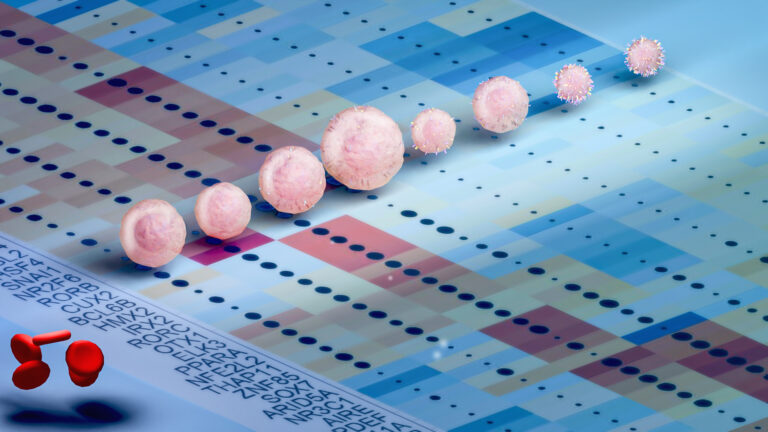Bioscience
Memory formed alongside brain signaling system
Evolution of lactate-mediated nerve signaling probably enabled memory systems, a comparative gene study shows.

The brain’s ability to use lactate, a byproduct of sugar metabolism, to support neuronal signaling and memory formation traces back to genes that evolved well before the emergence of higher cognitive functions.
Over the last billion years or so, the genetic underpinnings of memory and lactate-mediated nerve signaling each gradually — and separately — grew in complexity before becoming linked, probably around 500 million years ago in our early backbone-bearing ancestors.
The findings, from Takashi Gojobori, Pierre Magistretti and KAUST colleagues[1] help to deepen scientists’ understanding of memory systems and could assist drug developers in discovering new lactate-directed treatments for memory disorders.“This study is the first comprehensive attempt to interrogate the evolution of memory-related genes, and we provide evolutionary insights into the possible relationship between the memory system and the lactate-mediated neural plasticity system,” says Amal Bajaffer, postdoc and first author of the new report.
The role of lactate in memory consolidation first became evident around a decade ago after a team co-led by Pierre Magistretti, now director of the KAUST Smart Health Initiative, demonstrated how the signaling molecule activates pathways required for memory formation in the rat brain.

© 2023 KAUST; Anastasia Serin
To better understand the evolutionary roots of this process, Magistretti teamed up with Gojobori’s group, and together they searched for genes related to memory and lactate-mediated brain signaling across 11 different species, ranging from single-celled organisms such as yeast, to simple animals such as sea squirts, to more complex beings such as mice.
Of the hundreds of different memory and lactate signaling genes identified in mice, a large fraction was conserved in yeast and primitive animal-like creatures also, indicating that these genes must have arisen before any higher-order brain functions evolved.
Those early genes probably then adapted, duplicated and diverged over the years, first with the evolution of multicellular animals and then with the emergence of the vertebrate brain. In the process, 13 genes became involved in both memory and lactate signaling, suggesting a molecular coupling between both systems during the evolutionary course of brain complexity.
That genetic overlap, combined with the similar evolutionary trajectories of genes implicated in both systems, all point to lactate transport as a key enabler of our cognitive abilities. “The function of lactate as a signaling molecule in the brain could be one of the hallmarks that distinguished memory-possessing species and enhanced their memory functions,” Bajaffer says.
Reference
- Bajaffer, A., Mineta, K., Magistretti, P. & Gojobori, T.. Lactate-mediated neural plasticity genes emerged during the evolution of memory systems. Scientific Reports 12, 19238 (2022).| article
You might also like

Bioscience
Cell atlas offers clues to how childhood leukemia takes hold

Bioscience
Hidden flexibility in plant communication revealed

Bioscience
Harnessing the unintended epigenetic side effects of genome editing

Bioscience
Mica enables simpler, sharper, and deeper single-particle tracking

Bioengineering
Cancer’s hidden sugar code opens diagnostic opportunities

Bioscience
AI speeds up human embryo model research

Bioscience
Sex chromosome overload sparks to a common developmental faultline

Bioscience




